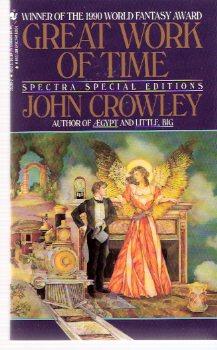Plot
Caspar Last uses his newly created time machine to travel to 19th-century British Guiana to obtain the very rare British Guiana 1c magenta stamp. Last plans to sell the stamp, reap the profits, and never again use time travel or let it be used by others. A shadowy group called the Otherhood buys his stamp and takes control of the time machine, which it wishes to use to preserve the existence of the British Empire. In the new timeline, the British Empire survives as a dominant world power throughout the 20th century.
Denys Winterset, a promising young official in the Colonial Service in Africa in the 1950s, travels the Cape to Cairo Railway, where he meets a mysterious stranger, and is invited to join the Otherhood. Winterset is told that he must travel back to the beginning of the group in 1893 and assassinate its founder Cecil Rhodes. Otherwise, in the late 1890s, Rhodes will change his will and dissipate much of his fortune, the Otherhood will never come into being, and the original timeline will be restored.
In another timeline, a different manifestation of Winterset travels into the future, even though such travel had been forbidden by the Otherhood. There, he learns that excessive tinkering with the timelines has generated countless unintended changes. The citizens of this world ask Winterset to go back, prevent the previous Winterset from killing Rhodes, and restore the "true" timeline.
Meanwhile, the other Winterset has arrived in 1893 Cape Town and has no difficulty in gaining Rhodes's trust. At the moment of opportunity, a mysterious force, implied to be the future Winterset, prevents Winterset from pulling the trigger. The mission fails and traps Winterset in the past. Winterset enters the service of Rhodes and witnesses first-hand the ugly and brutal side of Rhodes's independent colony-building. Later on, Winterset can only watch helplessly as "The Original Situation" reasserts itself, the world is convulsed by two World Wars, and the second one is followed by the breakup of the British Empire.
In the final chapter, Winterset, a young man, now living in the "true" 20th-century history, enters the Colonial Service, now a doomed institution, with the Empire's colonies being ceded to new independent nations in Africa. He meets his older self in 1956 in Africa and learns of the truth of time travel. He helps his older self escape from Africa amid the chaos and returns to London, where the story ends with their last meeting many years later.
Winterset notes in The Times newspaper "the sale of the single known example of the 1856 magenta British Guiana" stamp, known to have been owned in 1956 by the Otherhood, and realises that time travel means that his story is still vulnerable to being rewritten.
This page is based on this
Wikipedia article Text is available under the
CC BY-SA 4.0 license; additional terms may apply.
Images, videos and audio are available under their respective licenses.
